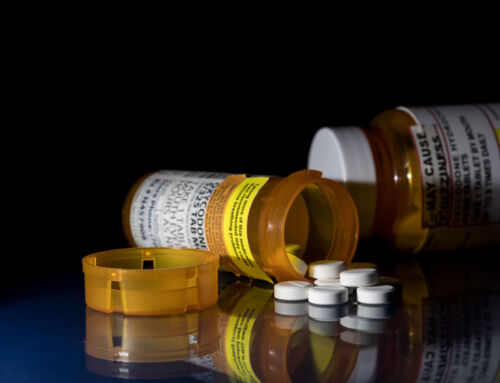Drug and Alcohol Detox Center
By now most people in America have heard of fentanyl. This powerful synthetic opioid was originally developed in 1959 as an intravenous anesthetic. It didn’t enter the news cycle until widespread fentanyl overdoses began to happen in the early 2000s. What happened in the time between and which drugs have fentanyl in them now?
This Atlanta Detox Center article explores and answers these questions and more.
What is Fentanyl Exactly?
Fentanyl is a potent synthetic opioid painkiller, about 50 to 100 times stronger than morphine, and is used for managing severe pain, typically post-surgical pain or in patients with chronic pain who are physically tolerant to other opioids. It’s also used in palliative care to alleviate terminal pain.
Fentanyl comes in various forms including injections, transdermal patches, and lozenges. It works like any other opioid, by binding to the body’s opioid receptors, which are found in areas of the brain that control pain and emotions. When fentanyl binds to these receptors, it drives up dopamine levels in the brain’s reward areas, producing a state of euphoria and relaxation.
However, due to its potency, fentanyl can also lead to harmful side effects such as confusion, constipation, sedation, tolerance, addiction, respiratory depression, and at high doses, can cause potentially fatal overdose.
Which Drugs Have Fentanyl In Them?
The illegal manufacturing of fentanyl and its high potency and relatively low cost to produce has led to it being mixed with many other illegal drugs on the black market. In many cases now fentanyl is the only active ingredient, for example in fake prescription painkiller tablets. The fact is that almost no drug purchased illegally now is considered completely safe from fentanyl contamination. This means people are being exposed to potential opioid overdose, sometimes without even realizing they’ve taken an opioid. For example, a fake Adderall tablet may contain a stimulant like methamphetamine or even caffeine, combined with fentanyl.
Just some of the drugs that have been found to contain fentanyl include:
- Heroin
- Cocaine
- Crystal meth
- Low-grade marijuana
- Ecstasy/MDMA/”Molly”
- Fake OxyContin tablets
- Fake Percocet tablets
- Fake Adderall tablets
- Fake Lortab tablets
When Did They Start Putting Fentanyl In Heroin And Other Drugs?
More widespread fentanyl abuse first started appearing on the radar of medical professionals and law enforcement in the early 2000s. As the OxyContin crisis unfolded, more attention began to be paid to opioid over-prescription and “doctor shopping” or visiting multiple doctors to get overlapping opioid prescriptions, without the doctors being aware.
A shift occurred when fentanyl began appearing in illegal drugs around the 2010s. Drug dealers started adding it to heroin and counterfeit prescription pills to increase their potency and their profits. The Drug Enforcement Administration (DEA) reports a significant surge in confiscations of illegally used fentanyl from 2013 onwards.
Today, finding fentanyl in street heroin is common. It is found in about ¾ of the heroin seized by the DEA. “Heroin-related” opioid deaths nearly tripled in just three years, between 2011 and 2014. We don’t think it’s much of a stretch to attribute that to fentanyl. Especially when you consider that 2010 is when we first began to see fentanyl mixed into a large portion of the street heroin supply.
Facts about fentanyl mixed into other drugs:
- Most fentanyl abuse before 2010 involved the prescription, pharmaceutical-grade form.
- In 2010, illegally manufactured fentanyl was appearing in more and more street heroin.
- Fentanyl is now commonly found in counterfeit pain pills, fake Percocet for example.
- It is more difficult to reverse overdose with NARCAN when someone has used fentanyl.
Sobering Statistics About Fentanyl Mixed Into Illegal Drugs
The rise of illegal fentanyl being mixed into drugs like heroin in the U.S. has sadly been something of a “perfect storm” scenario. This began to happen right when the OxyContin and opioid overprescription crisis was peaking and widely covered in the news. So-called pill mills were beginning to be shut down. Doctors were starting to become much more careful about prescribing opioids.
- As of 2020, the DEA reports that fentanyl has been detected in more than 71% of seized heroin.
- Per NIH, since 2011, about 75% of the opioid overdose deaths in NE states were due to fentanyl.
- According to the DEA, from 2010-2014 alone, there was a 248% increase in overdose deaths “involving heroin”.
As authentic prescription opioids have become increasingly difficult to get, both from doctors and on the black market, many desperate users of OxyContin and other prescription opioids turned to heroin when their withdrawal symptoms kicked in.
Fentanyl Mixed Into Street Drugs: From Bad To Worse
As fentanyl was beginning to be added to more and more of the street heroin supply by mid-level and street dealers looking to expand their profits. The shortage of prescription opioids also caused a dramatic increase in the manufacturing of fake Percocet, OxyContin, and other prescription pain meds.
Since fentanyl is completely synthetic, it’s much each for organized crime to manufacture than the genuine article (semi-synthetic opioids like oxycodone). But because fentanyl is also about 50 times more potent than pure heroin, it’s very hard to mix precisely the right amount in. Add to that the morbid reality that a few overdose deaths attributed to a particular batch of heroin can actually be good for business.
People who are addicted to heroin will seek out that “brand” of heroin because reports of overdose suggest it’s a particularly potent batch. Experienced users often presume they can just “be careful” and it’ll be OK. The dramatic spike in overdose deaths over the past 10+ years suggests otherwise.
So, ironically the effort to crack down on prescription drug misuse unfortunately helped to push some people into the black market. At the same time, both heroin spiked with fentanyl and counterfeit pain pills made with fentanyl began to flood the market. It’s not difficult to see how this would be a formula for disaster.
Hope For Opioid Addiction
While it’s true that opioid use disorders are more dangerous than ever with fentanyl making an appearance — it is also true that there is more help available than ever before. If one positive thing has come out of America’s opioid crisis, it is that it has increased the amount of treatment and access to addiction care. It has also led to the development of more sophisticated medication-assisted treatment (MAT) programs which have made a big difference in helping people put much longer periods in recovery.
The bottom line is that recovery is for everyone and anyone can recover. We won’t tell you it’s easy, but we can tell you that it’s possible. The most important thing is that you or your loved one is willing to try a new way of living. Make no mistake, recovery is a lifestyle. Addiction treatment helps to stabilize you and create a solid foundation for a lifetime in recovery, one day at a time.
Atlanta Detox Center Can Help You Find Freedom
Atlanta Detox Center is Georgia’s premier drug and alcohol treatment center. If you or someone you love is ready to stop the suffering — we should talk. Atlanta Detox Center offers hotel-like accommodations and the comprehensive medical detox support you need to get sober comfortably.
You and the people you care for deserve the Atlanta Detox Center standard of care. Contact us online or give us a call at (470) 450-2355 to begin moving in the right direction.







